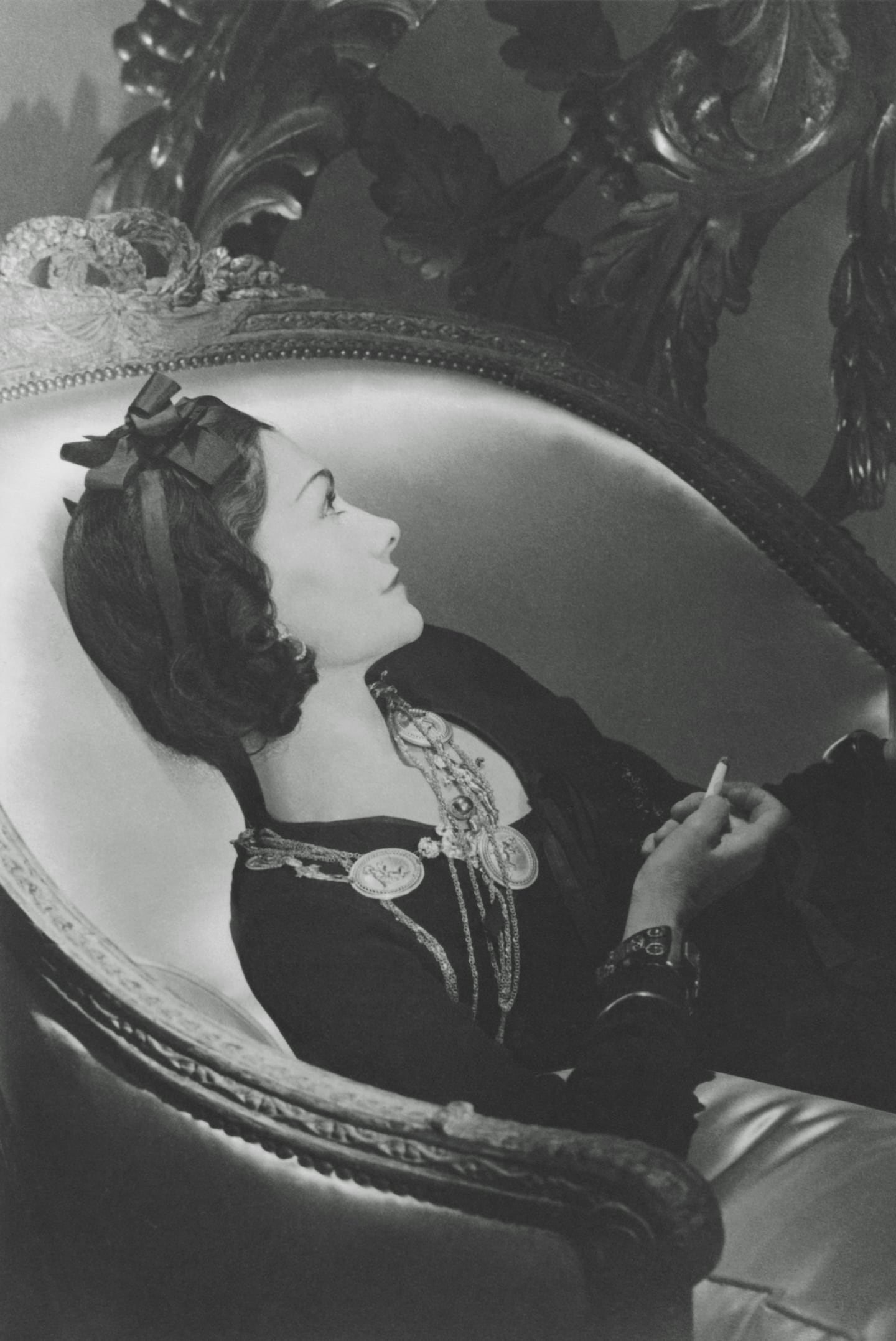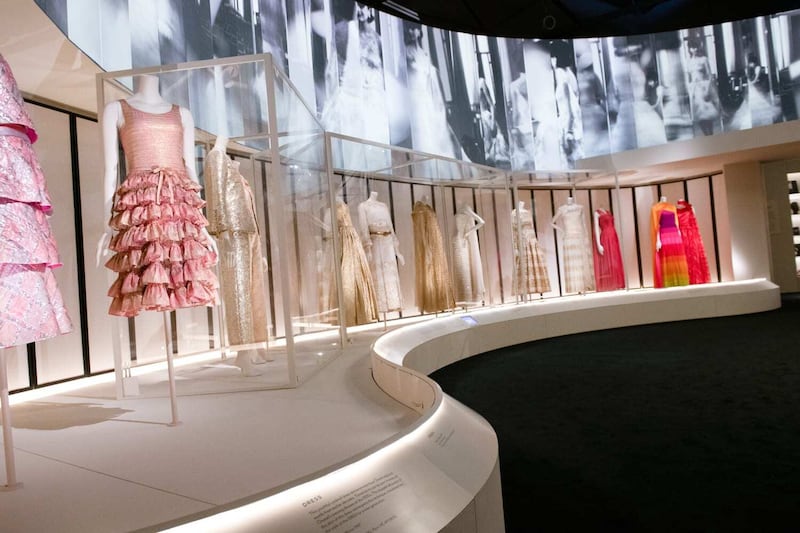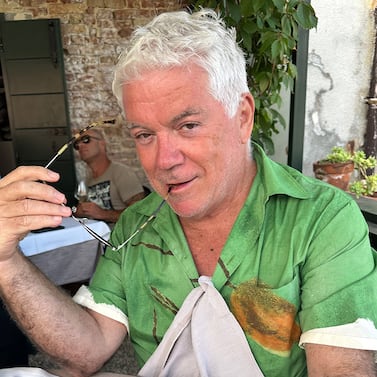
The Business of Fashion
Agenda-setting intelligence, analysis and advice for the global fashion community.

Agenda-setting intelligence, analysis and advice for the global fashion community.

Gabrielle Chanel never married, so Bruno Pavlovsky, the impish but unflaggingly correct president of fashion at the company that bears her name, refers to her without fail as “Mademoiselle Chanel.” His observation of etiquette seems more and more incongruous the further you get into the salons of Gabrielle Chanel: Fashion Manifesto, a major exhibition that has just opened at London’s Victoria & Albert Museum.
Outside France, “mademoiselle” might suggest girlishness. Chanel’s ambition, pragmatism, notorious steeliness and, most of all, vision were anything but. There are almost 200 looks on show — some of them more than a century old. But to say that you could wear much of it tomorrow and look very much today is stating the obvious. It’s not enough to summon timelessness as a response. Instead, try to conjure up Gabrielle “Coco” Chanel’s instinctive sense of modernity, and marvel at the woman’s achievement, given when and where she worked.
That would certainly seem to be Pavlovsky’s reaction, even now after 33 years working for the brand. “Everything we talk about in fashion today, that was always here,” he says. “So correct and so important.” The V&A show is the latest edition of a retrospective which was first shown at the Palais Galliera in October 2020 in Paris, before travelling to Melbourne, Tokyo and now London. Each time, the exhibition has been reconceptualised (London adds 60 new looks), and each time Pavlovsky says that he is “always rediscovering, always surprised.”

It’s pure coincidence that the V&A’s Chanel show opens a couple of months after the Metropolitan Museum’s Karl Lagerfeld exhibition closed but Lagerfeld has dominated the Chanel story for so long that Fashion Manifesto does seem like a timely reassertion of Mademoiselle as the real OG, her radicalism uniquely dominant in a way Karl could never be.
ADVERTISEMENT
Pavlovsky recalls the years when the brand was acquiring the patrimoine, the archive of Chanel originals. “I’d talk with Karl about what we want to buy, what we don’t want to buy. And I remember when we were buying something, Karl and Virginie [Viard, Lagerfeld’s right hand and eventual successor] wanted to see the product, to touch it.” Lagerfeld was involved in the initial discussions for the exhibition at the Palais Galliera and it was always very clear to Pavlovsky that, in Karl’s eyes, Chanel was a true fashion icon. Although, at one point, he did make a wicked little video mocking up a dialogue between him and Mademoiselle in which she furiously upbraids him for messing with her brand.
But the notion of reasserting the founder’s story is particularly interesting because it touches on hoary notions like heritage and legacy and how much they truly matter in a your-fifteen-minutes-is-up world. “I don’t know if you remember 20, 30 years ago, you had the thing that modernity was not about legacy,” Pavlovsky muses. “Modernity was about the capability to invent new things. I think the modernity of today is also about legacy, plus a twist, something that a designer like Virginie brings. A mix of legacy and vision. It’s not about the past, it’s a way to re-introduce what has been done into what we are doing.”
Which makes the location of this year’s Métiers d’Art show, Chanel’s annual celebration of the virtuoso work done by the artisanal houses it owns, especially intriguing. In the past, there was usually a connection (some more tenuous than others) with Gabrielle Chanel’s own biography. That has now drifted away. Last year there was a joyous event in Dakar, in Senegal. On December 7th, Métier d’Art touches down in Manchester AKA Madchester, home to the Haçienda, to Joy Division and New Order and Happy Mondays, and, much further back, the “dark satanic mills” of the Industrial Revolution. These aren’t the associations you’d usually make with a global fashion brand like Chanel; but, for Pavlovsky, that is precisely the point.
Gabrielle Chanel rejected the style orthodoxies of the day when she opened her first shop in Paris in 1910. Her stance surely registered as eccentric. “Your best contribution to the brand today is about this posture, being able to dare,” Pavlovsky agrees. “Not her eccentricity but what is the eccentricity of today. At Chanel, we always have to dare, to go a step further. When we decide to go to Manchester or Dakar, it’s more than just a show. It means a lot of things.” In his eyes, at least, it is primarily about cultural engagement. Well, colour me curious about Chanel’s international invitees engaging with the culture of Manchester’s Canal Street.
But Manchester is actually just the most colourful tip of what Pavlovsky calls Chanel’s “British moment.” “We were in Los Angeles a few months ago, we’ll be in Shenzhen in the weeks to come, so Chanel is everywhere. But I think, yes, there is a British moment.”

Mademoiselle’s own emotional connections with the UK have been thoroughly documented. Her signature tweed was even borrowed from a British beau. But I doubt that she, even at her most visionary, could have imagined the edginess of Manchester, co-opted in her name, or the hallowed halls of the V&A (just wait till you see the two-storied room of Chanel tweed suits, like gorgeous candies in a glass jar) or even, for that matter, and the elegant greensward of London’s Berkeley Square, where a new global headquarters — 86,000 square feet spread over eleven floors — is taking shape, overseen by the company’s newish London-based CEO Leena Nair.
It makes for a great success story. But, as Pavlovsky sagely observes, there was no such thing as storytelling in fashion when Gabrielle Chanel launched her business over a century ago. It was purely the product that did all the talking. She knew what she was doing. Those antique originals speak volumes in the V&A show. It seems so much harder now to make your fashion voice heard above the digital din. “I would say not harder, but probably more complex than it was 10 years ago,” Pavlovsky counters. “It’s not a question of Karl or Virginie. It’s a question of where we live today: we have to learn how to create a strong impact without making too many mistakes.”
Gabrielle Chanel made some serious mistakes during WWII. To its credit, the V&A exhibition doesn’t shy away from them. But such was her impact that she managed to make the greatest fashion comeback of all time, at the age of 71. Though it’s still the product talking in the multi-billion-dollar brand that trades under her name, her own story is clearly so compelling that the V&A is looking at a sold-out show. To dare, to dream: it never gets old.
In the fourth instalment of BoF’s fashion history series, we meet the creator of the ‘little black dress,’ who took her cues from a country in mourning. Gabrielle ‘Coco’ Chanel, the designer doyenne who founded fashion’s most famous house, used her lovers’ money to establish herself and rewrote the rulebook with her mannish collections.
The privately-held fashion and beauty giant’s sales rose 17 percent to $17 billion in 2022. Private salons for top-spending clients, emerging technologies and a new London headquarters are on new CEO Leena Nair’s agenda.
Virginie Viard is the latest designer to join in fashion’s pre-Olympic celebration of Paris, both as city and state of mind, writes Tim Blanks.

Tim Blanks is Editor-at-Large at The Business of Fashion. He is based in London and covers designers, fashion weeks and fashion’s creative class.
Mining company Anglo American is considering offloading its storied diamond unit. It won’t be an easy sell.
The deal is expected to help tip the company into profit for the first time and has got some speculating whether Beckham may one day eclipse her husband in money-making potential.
The designer has always been an arch perfectionist, a quality that has been central to his success but which clashes with the demands on creative directors today, writes Imran Amed.
This week, Prada and Miu Miu reported strong sales as LVMH slowed and Kering retreated sharply. In fashion’s so-called “quiet luxury” moment, consumers may care less about whether products have logos and more about what those logos stand for.